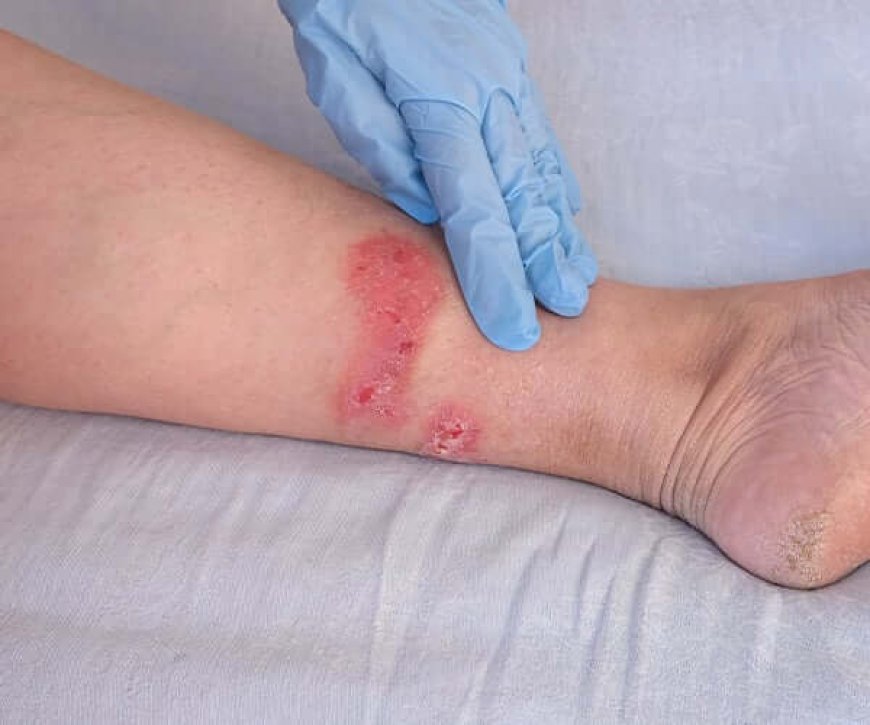Levofloxacin for Skin Infections
Levofloxacin for Skin Infections

Skin infections are a common medical condition caused by the invasion of bacteria, viruses, fungi, or parasites into the skin and underlying tissues. Among the bacterial causes, conditions like cellulitis, abscesses, and infected wounds are frequently encountered. When a bacterial skin infection becomes severe or resistant to first-line treatments, antibiotics like levofloxacin may be prescribed to combat the infection effectively.
Bacterial Skin Infections
Bacterial skin infections occur when bacteria breach the skin's protective barrier due to cuts, scratches, insect bites, or other injuries. Common bacteria responsible for these infections include Staphylococcus aureus, including methicillin-resistant strains (MRSA), and Streptococcus pyogenes. Symptoms vary depending on the severity and type of infection but often include redness, swelling, pain, warmth, and, in some cases, fever.
The Role of Levofloxacin in Treating Skin Infections
Levofloxacin is a broad-spectrum fluoroquinolone antibiotic that targets many bacteria responsible for skin infections. It works by inhibiting bacterial enzymes needed for DNA replication and repair, stopping bacterial growth and eliminating the infection. Its broad efficacy makes it a valuable option for treating skin infections, particularly when other antibiotics are ineffective or contraindicated. Buy Levofloxacin wholesale online
Types of Skin Infections Treated with Levofloxacin
Levofloxacin is effective in managing various bacterial skin infections, including:
- Cellulitis: A deep skin infection caused by bacteria entering through breaks in the skin, resulting in redness, swelling, and tenderness.
- Abscesses: Localized collections of pus caused by bacterial infection, often requiring antibiotic treatment following drainage.
- Wound Infections: Bacterial contamination of surgical or traumatic wounds can lead to infection, requiring prompt antibiotic therapy.
- Complicated Skin and Skin Structure Infections (cSSSIs): These include more severe infections involving deeper skin layers, muscles, or tissues, often caused by resistant bacterial strains.
How Levofloxacin Is Administered
Levofloxacin is available in both oral and intravenous (IV) forms, providing flexibility in treatment based on the infection's severity and the patient’s condition.
- For mild to moderate skin infections, oral levofloxacin is commonly prescribed, offering convenience and ease of administration.
- For severe or complicated infections requiring hospitalization, IV levofloxacin ensures rapid delivery of the medication to the affected area.
Treatment durations typically range from 7 to 14 days, depending on the infection’s severity and the patient’s response. It is crucial to follow the prescribed course to ensure complete recovery and prevent antibiotic resistance.
Advantages of Using Levofloxacin for Skin Infections
Levofloxacin offers several benefits for patients with bacterial skin infections:
- Broad-Spectrum Coverage: Its ability to target a wide range of bacterial pathogens makes it effective against various skin infections, including those caused by resistant bacteria.
- High Tissue Penetration: Levofloxacin penetrates skin and soft tissues effectively, ensuring the medication reaches the infection site.
- Versatile Administration: The availability of both oral and IV forms allows tailored treatment plans based on patient needs.
Potential Side Effects of Levofloxacin
As with any medication, levofloxacin may cause side effects. Most are mild and temporary, including nausea, diarrhea, headache, or dizziness. However, more serious side effects, though rare, may include:
- Tendonitis or tendon rupture, especially in older adults or those on corticosteroids
- Peripheral neuropathy, causing tingling or numbness in the extremities
- Allergic reactions, such as rash, itching, or swelling
Patients experiencing severe side effects should discontinue the medication and seek immediate medical attention.
Precautions and Drug Interactions
The safe and effective use of levofloxacin requires attention to potential risks and interactions:
- Avoid Concurrent Use with Certain Drugs: Antacids, iron supplements, and calcium-containing products can interfere with levofloxacin’s absorption. These should be taken at least two hours apart.
- Monitor for Tendon Issues: Patients with a history of tendon disorders should use levofloxacin cautiously.
- Inform Healthcare Providers of Existing Conditions: Individuals with epilepsy, kidney impairment, or heart rhythm problems should consult their doctor before starting levofloxacin.
The Challenge of Antibiotic Resistance
The overuse and misuse of antibiotics have led to the emergence of resistant bacterial strains, making some infections harder to treat. To address this challenge, levofloxacin should only be used when prescribed by a healthcare professional. Completing the full course of treatment, even if symptoms improve early, is essential to prevent resistance.
When to Seek Medical Advice
Patients should consult their doctor promptly if they experience:
- Persistent or worsening symptoms despite treatment
- Severe side effects such as tendon pain, allergic reactions, or chest discomfort
- Concerns about drug interactions or pre-existing medical conditions
Conclusion
Levofloxacin is a powerful antibiotic for treating bacterial skin infections, offering broad-spectrum coverage and high tissue penetration. Its ability to address a wide range of bacterial pathogens makes it a versatile and effective option for managing skin and soft tissue infections. However, its use must be guided by a healthcare professional to ensure safety and optimal results. Buy levoflox 250mg
With proper use, levofloxacin can lead to rapid symptom relief, full recovery, and prevention of complications, making it an essential tool in combating bacterial skin infections.
